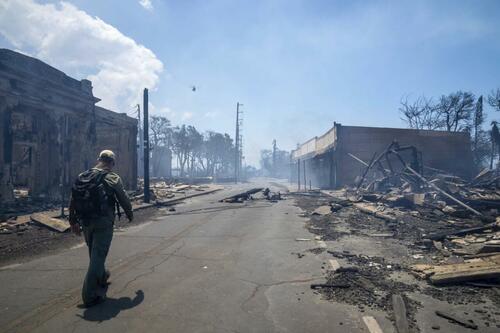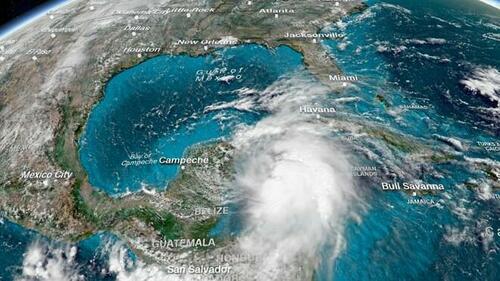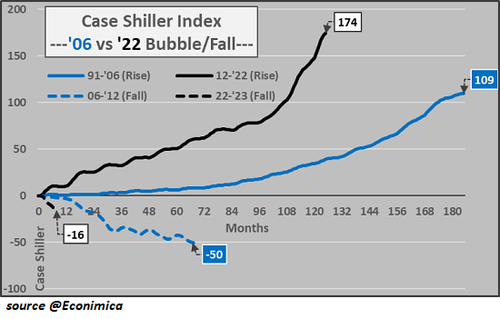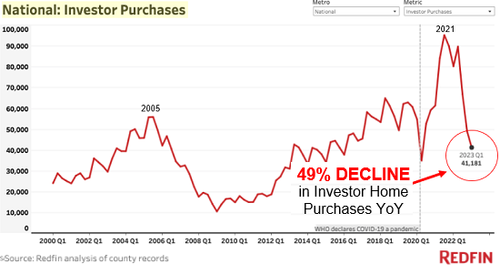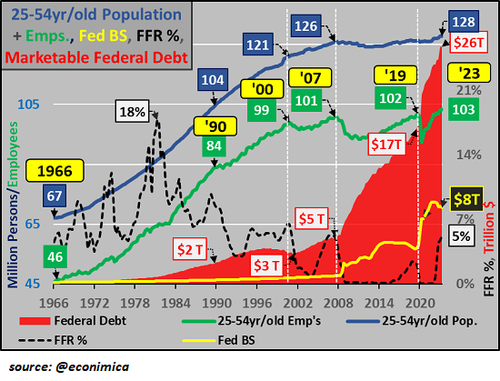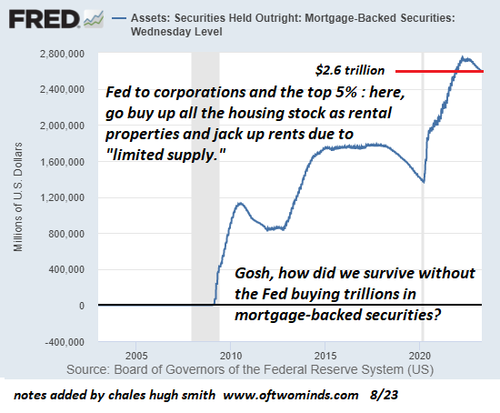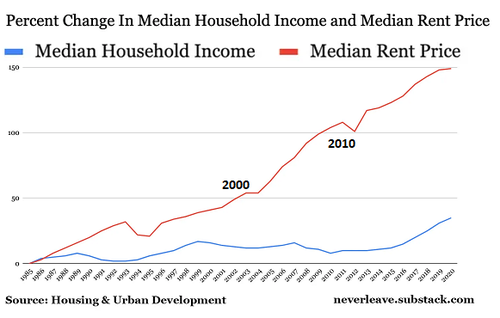Wagner Plane ‘Crash’ Whodunnit & Is Prigozhin Really Dead?
Update(1324ET): The assessment out of the US is changing fast, or rather anonymous US officials can’t get their story straight. The latest via news wires:
- US OFFICIAL SPEAKS ABOUT PRIGOZHIN PLANE CRASH
- US DOESN’T THINK PRIGOZHIN JET DOWNED BY SURFACE-TO-AIR MISSILE
- EXPLOSION LIKELY BROUGHT DOWN PLANE BELIEVED TO CARRY PRIGOZHIN
Scoop: US officials need to get their stories straight. pic.twitter.com/mMDdyWaqvD
— Brian Castner (@Brian_Castner) August 24, 2023
* * *
President Putin has vowed that the criminal investigation into the widely reported death of Wagner chief Yevgeny Prigozhin will be pursued to completion. Prigozhin is believed to have gone down with nine others, including top Wagner commander Dmitry Utki, in a plane crash outside Moscow on Wednesday which was caused either by an anti-aircraft missile or possibly midflight bombing.
Putin attended a concert as the news broke yesterday evening, even as headlines shocked the world and also saw a flood of confused and angry statements coming from Wagner social media channels. But Putin’s motorcade was later in the night seen speeding back to the Kremlin, likely where he was briefed on the plane ‘crash’.
Though there are reports from official Russian sources that Prigozhin’s body has been positively identified, there’s still much that remains murky and unknown. Area residents and eyewitnesses reported hearing one or two loud bangs in the sky before the Embraer Legacy 600 (EMBR3.SA) executive aircraft plummeted into the Tver region north of Moscow. The private jet had been en route to St. Petersburg. Villagers saw the fall from the sky, after which “everything was on fire,” as cited in Reuters.
The only known details released thus far are from Russian federal aviation authorities:
Russia’s Emergency Situation Ministry said all 10 people on board died. The federal aviation agency published a manifest of 7 passengers and 3 crew. Alongside Priogzhin, the manifest said his top military commander Dmitry Utkin and other senior Wagner figures were on board.
There was “no indication that there was anything wrong with this aircraft,” prior to the rapid descent at the end of the flight, Ian Petchenik of Flightradar24 said. He told Reuters the erratic climb in altitude could have been as the crew were “wrestling” with whatever problem they had encountered mid-air.
US officials have told Reuters on Thursday they assess it to have been a surface-to-air missile which originated inside Russia, according to fresh news wires:
- US THINKS MISSILE FROM RUSSIA LIKELY SHOT PRIGOZHIN PLANE: RTRS
- EXCLUSIVE-U.S. BELIEVES SURFACE-TO-AIR MISSILE ORIGINATING INSIDE RUSSIA LIKELY SHOT DOWN PLANE PRESUMED TO BE CARRYING PRIGOZHIN, U.S. OFFICIALS TELL RTRS
Another scenario being considered is whether it was a mid-air bombing or terrorist act, or possible covert operation sponsored by a hostile foreign intelligence agency, or the unlikely scenario of Ukrainian intelligence (unlikely given the sophistication and difficulty).

If it indeed was the result of Russian anti-air defenses, then it surely points to either Putin or the top military chain of command bent on getting revenge, coming precisely two months since the start of the June 23-24 mutiny which left a dozen or more Russian soldiers dead.
The now apparently deceased 62-year-old Prigozhin had many powerful friends and enemies, but some analysts are questioning why Putin would choose to dispatch him in such dramatic fashion. The prevailing wisdom is saying it was a ‘message’ to elites and any challengers to Putin’s rule or decision-making, or direct revenge for the prior rebellion and humiliating blow to Kremlin/military power.
But below is an alternate opinion and speculation…
Putin and Prigozhin
I am of the opinion President Putin would not use this kind of cowardly means (shooting down a passenger jet) if this turned out to have been an assassination of Prigozhin and others.
This would be potentially disastrous for the war effort and for Russian… pic.twitter.com/F2drDMQTZT
— James Porrazzo (@JamesPorrazzo) August 23, 2023
Journalist and geopolitical commentator James Porrazzo writes on the extreme risks Putin faces if he ordered the assassination:
I am of the opinion President Putin would not use this kind of cowardly means (shooting down a passenger jet) if this turned out to have been an assassination of Prigozhin and others. This would be potentially disastrous for the war effort and for Russian public opinion, especially in professional military circles and on the Right.
Murdering the second or first most charismatic Russian leader, with a following of at least 100,000 experienced military veterans spread across the Russian Federation, in addition to tens of millions or more normal Russians, not to mention those still active in Wagner, would be borderline insanity.
Arresting him, like Strelkov was, would be the course of action I would suspect if the issues between Putin and Prigozhin were so severe.
Already, there’s talk of a new Wagner ‘march on Moscow’ as mercenary fighters voice their rage at Kremlin and defense ministry authorities. Their founder and chief “better be alive” – Wagner Telegram channels have declared.
And then there’s the lingering question of the second plane owned by Wagner and Prigozhin which was observed flying in Russian airspace in a nearby vicinity close in time to the aerial disaster.
There’s also this to consider:
However, Keir Giles, from the London-based think tank Chatham House, warned: ‘It’s been announced that a passenger by the name of Yevgeny Prigozhin was on board – but it is also known that multiple individuals have changed their name to Yevgeny Prigozhin, as part of his efforts to obfuscate his travels.’
The same analyst added: “Let’s not be surprised if he pops up shortly in a new video from Africa.”
Prigozhin’s second plane flew to Azerbaijan
It took off from Vnukovo airport and is heading to Baku.
Who is on board is unknown.
Recall that yesterday, after the crash, this plane made zigzags in the sky over Moscow, and then flew to St. Petersburg. Later, the business jet… pic.twitter.com/WZbCHX1kP2
— Ragıp Soylu (@ragipsoylu) August 24, 2023
Alive and well in Africa?
Prigozhin is supposedly alive and in Mali.
A number of African journalists are spreading reports of “eyewitnesses” who allegedly saw the head of Wagner PMC Yevgeny Prigozhin in Mali today.
In the Arab segment, there is also news that the founder of the Wagner PMC, Yevgeny…
— dana (@dana916) August 24, 2023
* * *
The below is a compilation of perspectives from US defense insiders (and thus representing largely establishment Washington thinking on the question), speculating on what may or may not have happened concerning Prigozhin’s fate, compiled by Academy Securities [emphasis ZH]:
“If true (and if Prigozhin was on board), the dramatic effect of the shoot down was not just a surprise but was also expected. Why it took so long is remarkable to anyone in national security spheres of influence. The way it was done demonstrates Putin’s ruthless control of Russia. The key now is how the Russian military folds the Wagner Group into its global operations. Putin is not about to just send them home. He needs their experience and capabilities to win in Ukraine and extend his global influence and operations. He knows who the Wagner leaders are that did not support the coup and he will leverage their leadership and experience along with Wagner’s battle-hardened soldiers.” – General Robert Walsh
“This is not surprising if it is a killing (and I believe that it is). I believe that the plane’s manifest carried other Wagner senior leadership. This returns full control of the Ukraine war to the Russian Federation Armed Forces. I don’t believe that it affects the military operations in a meaningful way. Wagner will likely become more aligned with the Russian Army in their efforts globally (and if they are re-deployed to the “Special Operation” in Ukraine). The leadership for Wagner will be carefully selected based on loyalty.” – General Frank Kearney
“The only surprise is that Prigozhin lasted this long after his failed coup. The experience of the Wagner Group will be exploited immediately by the Russian Federation forces. The celebrity of Prigozhin was a distraction. Look for his former subordinate leadership to be less visible and subsequently, more difficult to read in terms of next steps. More significantly, Putin just made his next strategic move in solidifying his hold on power. A month ago, the Russian military was stalled in Ukraine, Putin tolerated a direct threat to his control, and the world was poised to watch the Ukrainian military crush Russian forces in their much-anticipated counteroffensive. Today, the counteroffensive appears stuck, Russia’s military is not being forced out of its defensive positions, and Putin retains a firm grip on power. It’s not all quiet on the eastern front.” – General Spider Marks
“This looks like a “higher” altitude version of the “epidemic of Russian oligarchs falling out of windows”. This brings the recent count to eight. In 2017, USA Today published a list of 38 Russian officials and figures who died under suspicious circumstances. Clearly, this is a highly visible message to the rest of the oligarchs that Putin is still in charge, and those who challenge him will pay the price. Through that lens, I would expect that Generals Popov and Surovikin are packing a “go bag” just in case. This presents a great opportunity for the U.S. and other nations to start new efforts regarding relationship building in Africa. This incident also presents a very clear characterization of Russian leadership and “syndicate” rule. The incentive for senior military officers to do anything but push the gas pedal down on a failing strategy has evaporated. The risk of escalation (a desperate Putin, egged on by Medvedev) may bring the tactical use of nuclear weapons closer. It remains to be seen if the American and European foreign policy arms can use these examples as “character witnesses” for current Russian governance and what an Africa controlled by Putin would look like.” – General Michael Groen
“While we all wondered why Putin hadn’t eliminate Prigozhin sooner, it goes to the adage that “he who controls the OPTEMPO gets to strike at a time and place of his choosing”. Perhaps a happy Gerasimov and Shoigu may have been given “weapons free” to eliminate their rival. This eliminates any future challenges and brings Wagner under the complete control of Putin and his designated successor. I don’t see an impact on their operations in Africa unless the U.S. acts to message the risks of dealing with the likes of Putin (and that often falls on deaf ears). Wagner can be rebranded as desired without any dissenting voices, whether that be in Belarus, Africa, Ukraine, or any other theater. This is Russian housekeeping, and I would not see any changes to Putin’s overall strategy. He’s still watching the U.S. elections. This is just part of doing business in Russia. Prigozhin overplayed his hand, and it just took some time for Putin to rectify the situation. I’d be watching open-source reporting and for the IC to monitor SIGINT closely for reflections and attribution (don’t count out the Ukrainians). However, I am also hearing that there may have been two planes and they missed their target, so we will have to look for official confirmation.” – General Robert Ashley
Meanwhile this prior Putin interview has resurfaced and is making the rounds…
Interviewer: Are you able to forgive?
Putin: Yes….But not everything
Interviewer: What do you not forgive?
Putin: Betrayal. #Prigozhin #Wagner #Russia #Putin pic.twitter.com/yG8acJDTnX
— Sanbeer Singh Ranhotra (@SSanbeer) August 23, 2023
Tyler Durden
Thu, 08/24/2023 – 13:24
via ZeroHedge News https://ift.tt/Ad6Kroq Tyler Durden


